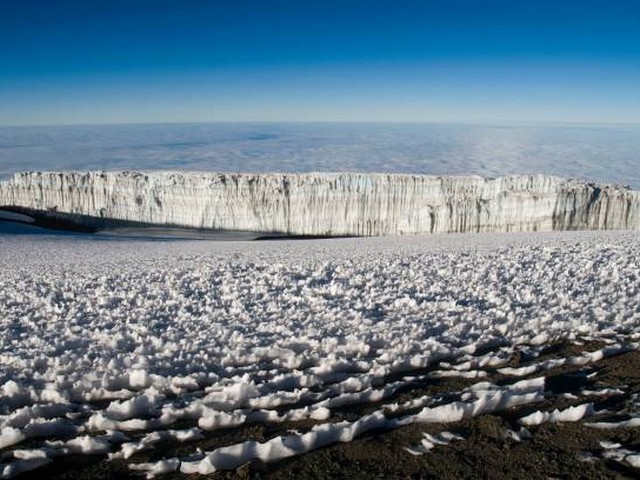How To Create Stunning Travel Films From Kilimanjaro Treks
Introduction: Capturing the Majestic Beauty of Kilimanjaro
Mount Kilimanjaro, an emblematic peak rising majestically above the African plains, offers more than just a trekking adventure; it presents a unique cinematic canvas. Whether you’re an amateur videographer or a seasoned filmmaker, creating a travel film during your Kilimanjaro trek can capture the essence of this epic journey. At Kilimanjaro Centre for Trekking and Ecotourism (KCTE), we believe that your adventure should be memorable and shareable. In this blog post, we will guide you through the essential steps to creating breathtaking travel films that encapsulate the spirit of Kilimanjaro. So, grab your camera, and let’s embark on a journey to the roof of Africa.
Preparing for Your Cinematic Journey
Gear Up: Choosing the Right Equipment
The first step to filming your trek is selecting the right equipment. Lightweight and durable gear is crucial, as you’ll be navigating various terrains. A good quality DSLR or mirrorless camera that performs well in different lighting conditions is ideal. Consider weather-proof models to withstand Kilimanjaro’s diverse climates. Bring along extra batteries, memory cards, and a portable charger to ensure you’re always ready to capture the moment.
Master the Basics of Travel Filmmaking
Understanding basic filming techniques will enhance the quality of your footage. Study the rule of thirds, effective ways to capture motion, and how to conduct engaging interviews with your fellow trekkers or guides. Knowing when to use different shots (wide, medium, close-up) will add variety to your film. Also, familiarize yourself with your camera’s settings – from ISO to exposure – to adeptly handle the mountain’s varying light conditions.
On the Trail: Filming on Kilimanjaro
Capture the Essence of Kilimanjaro
Mount Kilimanjaro is replete with breathtaking landscapes and vibrant cultures. As you trek from the lush rainforests to the stark alpine desert, capture the changing environments in your film. Record the early morning mists, the vastness of the Shira Plateau, and the dramatic vistas from the summit. Don’t forget to include scenes that feature local flora and fauna to give viewers a true sense of place.
Engage With the Culture
Your film should also reflect the rich cultural heritage of the Kilimanjaro region. Interact with the Chagga people, indigenous to the area, and include parts of their stories, music, and traditions in your film. Documenting your interactions with the guides and porters, who are integral to your journey, can add a poignant and human element to your story.
The Summit: Capturing the Climax
Reaching the summit, Uhuru Peak, is the climax of your Kilimanjaro trek. Prepare for this moment by planning your shots in advance. Capture the arduous final push during the night, the first light breaking at Stella Point, and the triumphant moment at the peak. These scenes are essential, as they encapsulate the challenge and exhilaration of the climb.
Post-Trek: Editing Your Travel Film
Crafting Your Story
After descending the mountain, the next phase is to bring your film to life through editing. Select a narrative that best represents your journey – it could be a personal transformation, the challenge of the climb, or an exploration of Kilimanjaro’s natural and cultural landscapes. Use music and voice-overs to enhance the storytelling, ensuring they complement the footage without overpowering the visuals.
Pay Attention to Pace and Rhythm
The pacing of your film should reflect the dynamic of the trek. Slow, panoramic shots can convey the awe of the landscapes, while quicker cuts might be used to illustrate the more strenuous parts of the climb. Balancing these elements will keep your audience engaged from start to finish.
Why Choose Kilimanjaro Centre for Trekking and Ecotourism (KCTE)?
At KCTE, we provide more than just guided climbs; we offer an experience that is deeply rooted in environmental and cultural respect. Our expert guides are not only seasoned climbers but also passionate storytellers who enhance your understanding of Kilimanjaro. By choosing KCTE, you’re ensuring that your trek—and your film—will be as authentic and impactful as possible.
Conclusion: Share Your Journey
Creating a travel film during your Kilimanjaro trek offers a unique way to preserve and share your experience. With the right preparation, a keen eye for storytelling, and a spirit of adventure, you can produce a film that captivates and inspires. Remember, every step you take on Kilimanjaro tells a story, and filming it is a fantastic way to share that story with the world.
Ready to film your Kilimanjaro adventure? Book your climb with Kilimanjaro Centre for Trekking and Ecotourism (KCTE) today, and start planning the travel film of a lifetime!
FAQs
What is the best time of year to film on Kilimanjaro?
The best months to film are during Kilimanjaro’s dry seasons, from late June to October and from late December to early March. These periods offer clear skies and favorable weather conditions for filming.
Do I need special permits to film on Kilimanjaro?
Yes, filming on Kilimanjaro requires a permit from the Tanzania Film Censorship Board and the Tanzania National Parks Authority. KCTE can assist in coordinating these permissions as part of our trekking packages.
Can I rent filming equipment in Tanzania?
While some equipment rental options are available in major cities like Arusha, we recommend bringing your own gear to ensure you have everything you need for your specific requirements.
How physically prepared should I be to film during the trek?
Filming while trekking requires a good level of physical fitness. Not only will you be climbing, but you’ll also be carrying or managing additional filming equipment. Pre-trek conditioning and acclimatization days are crucial.




